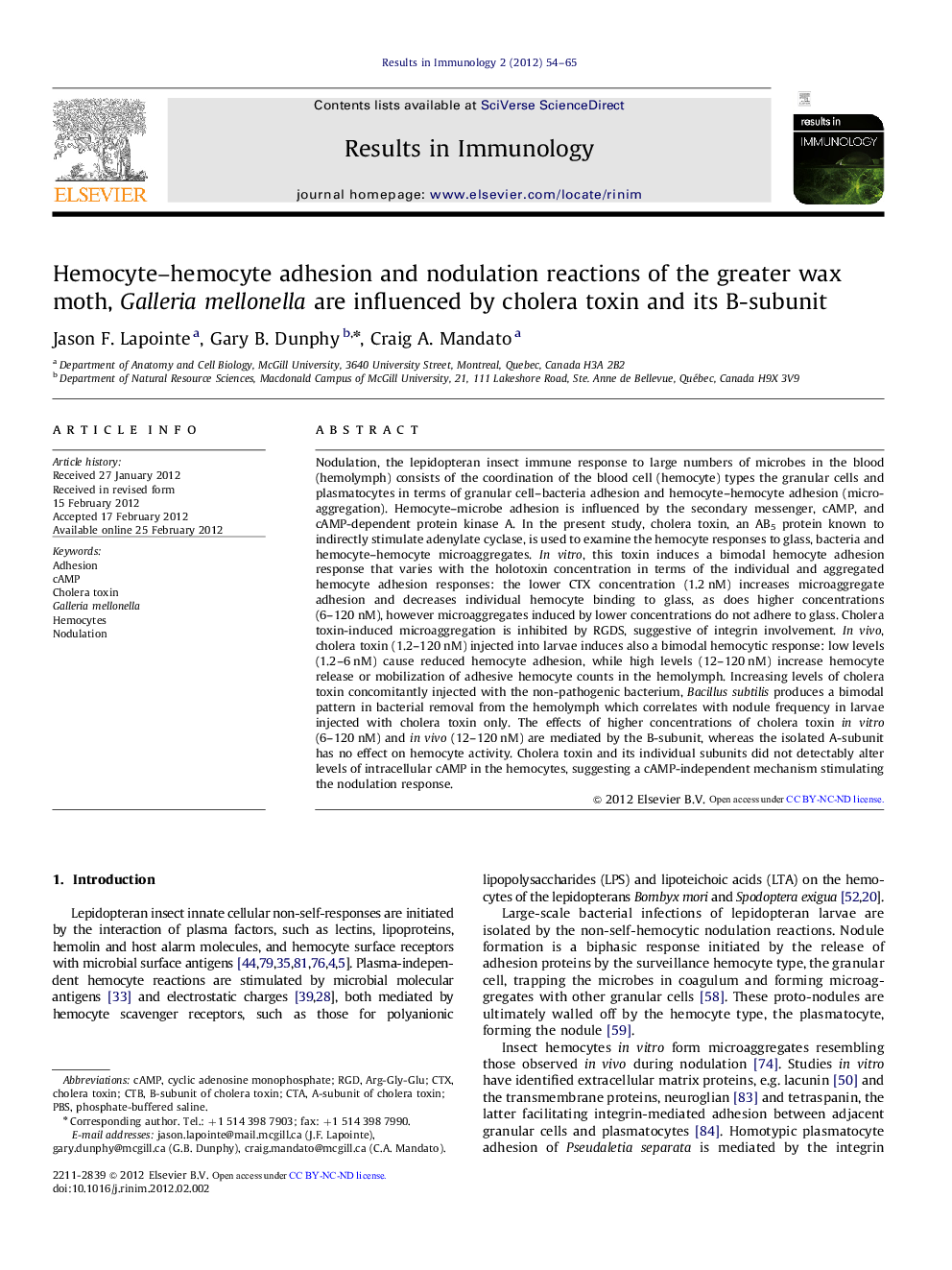| Article ID | Journal | Published Year | Pages | File Type |
|---|---|---|---|---|
| 2202425 | Results in Immunology | 2012 | 12 Pages |
Nodulation, the lepidopteran insect immune response to large numbers of microbes in the blood (hemolymph) consists of the coordination of the blood cell (hemocyte) types the granular cells and plasmatocytes in terms of granular cell–bacteria adhesion and hemocyte–hemocyte adhesion (microaggregation). Hemocyte–microbe adhesion is influenced by the secondary messenger, cAMP, and cAMP-dependent protein kinase A. In the present study, cholera toxin, an AB5 protein known to indirectly stimulate adenylate cyclase, is used to examine the hemocyte responses to glass, bacteria and hemocyte–hemocyte microaggregates. In vitro, this toxin induces a bimodal hemocyte adhesion response that varies with the holotoxin concentration in terms of the individual and aggregated hemocyte adhesion responses: the lower CTX concentration (1.2 nM) increases microaggregate adhesion and decreases individual hemocyte binding to glass, as does higher concentrations (6–120 nM), however microaggregates induced by lower concentrations do not adhere to glass. Cholera toxin-induced microaggregation is inhibited by RGDS, suggestive of integrin involvement. In vivo, cholera toxin (1.2–120 nM) injected into larvae induces also a bimodal hemocytic response: low levels (1.2–6 nM) cause reduced hemocyte adhesion, while high levels (12–120 nM) increase hemocyte release or mobilization of adhesive hemocyte counts in the hemolymph. Increasing levels of cholera toxin concomitantly injected with the non-pathogenic bacterium, Bacillus subtilis produces a bimodal pattern in bacterial removal from the hemolymph which correlates with nodule frequency in larvae injected with cholera toxin only. The effects of higher concentrations of cholera toxin in vitro (6–120 nM) and in vivo (12–120 nM) are mediated by the B-subunit, whereas the isolated A-subunit has no effect on hemocyte activity. Cholera toxin and its individual subunits did not detectably alter levels of intracellular cAMP in the hemocytes, suggesting a cAMP-independent mechanism stimulating the nodulation response.
Graphical abstractFigure optionsDownload full-size imageDownload as PowerPoint slideHighlights► Galleria hemocytes microaggregations adhere by a cAMP-independent but RGD-dependent mechanism. ► Hemocyte adhesion to slides and microaggregations were related to the cholera toxin physiological concentration. ► The toxin β-subunit at high physiological levels produced adhesion results comparable to the holotoxin. ► The holotoxin influenced the removal of the nonpathogenic bacterium, Bacillus subtilis from the hemolymph in vivo and enhanced nodulation.
